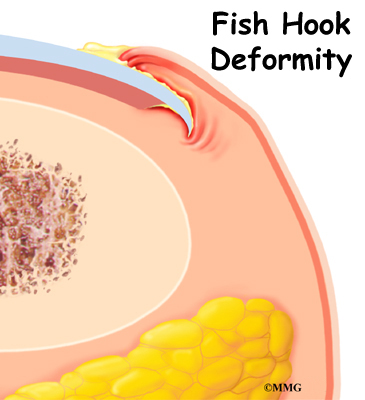
1) Ingrown nails can be treated with a PEDICURE.
As the image above shows, some patients will develop a deformity of the edge of the nail which extends underneath the skin and leads to pain and puncture of the skin eventually leads to infection. A pedicure only treats the exposed nail, and they are generally not able to relieve the symptoms entirely because of sensitivity to the area. In most cases, it is required to use local anesthetic to completely allow access to this painful area and this can only be accomplished in the office of a trained medical professional.

2) Ingrown nail surgery is painful.
It is actually more painful to allow this infection to become what is shown by the clinical picture above. This sort of infection is more painful secondary to the pressure from the underlying purulence, and pressure from the nail tissue pressing into the surrounding skin. After your procedure is completed, you will leave the office in no pain and after the lidocaine wears off, the pressure and sharp pains you were experiencing prior to the intervention will be minimal, and in most cases can be relieved by over the counter Alleve medication or variant.

3) After nail surgery my nail will be narrow
This is immediately after the nail is removed post procedure. The reddened area is raw tissue which is exposed post partial matrixectomy and prior to the chemical cauterization. As you can see, the nail that is visible is very normal looking, and most of the nail which is removed is not usually visualized as it is beneath the skin layer.

After several weeks, the nail tissue will heal, and the new nail border will attach to the side and appear very natural. In this clinical example it is the same procedure just a few weeks after, and the area that looks like a deficit in skin will fill in over time and the new nail fold will attach without any further intervention.
Brian Timm, DPM, FACFAS
Diplomate American Board of Podiatric Surgery




No comments:
Post a Comment